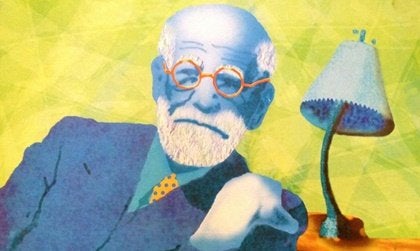One of Sigmund Freud’s geniuses is that he noticed everyday phenomena that, for most scholars of the mind, were irrelevant. One of them is the jokes. For him, the joke is much more than an ingenious or friendly way of thinking about reality.
His masterpiece on this subject is The joke and its relationship with the unconscious, published in 1905 and Freud analyzes the characteristics, elements and motivations of these everyday jokes that most of us make fun of, which he thought perhaps revealed more than we could. see. on its surface.
- Interestingly.
- Sigmund Freud wrote this book at the same time as another of his great productions: Three essays on the theory of sexuality.
- He had both manuscripts on the table at the same time.
- He stopped writing one to write the other.
- Which did not affect the quality of the two works.
- At least in terms of style and depth of reflection.
“Humor is the greatest manifestation of the individual’s coping mechanisms. “Sigmund Freud
For Freud, the joke is based on 6 basic techniques: condensation, displacement, double meaning, use of the same material, word play or joke by similarity and antinomic representation. Let’s describe these techniques:
For Freud, in the joke there are two types of motivations: the innocent joke, with no other motivation than to show naivety, and the joke sessed, or the one motivated by a hostile or obscene impulse. In the innocent joke come pleasure and laughter. exclusively of the spirit implied in them. Instead, in sessed jokes, pleasure would come to be broken with a form of repression.
The sesgade jokes include satirical and ironic statements, with the intention of ridiculing the other, so hostile or obscene content is not always rude, but they are obvious, they generate pleasure in those who listen to them because they believe they assume a violation of a standard in relation to certain subjects or figures.
It is very common for sesgade jokes to be directed against a figure of power, ideology, beliefs, people, race, etc. Are they usually one? Politically correct: to manifest truths that would not otherwise be accepted.
The joke is one of the mechanisms to deal with social, cultural or individual repression that generates discontent or neurosis, thanks to the funny story would unleash some of this tension that would be implicit in the repression, basically, there would be an idea : if it is funny to others it is because it is freed from coercion.
Laughter is a way to release emotional tensions and also a challenge for the repressor. In this sense, sesained jokes and laughter play a civilizing role. Instead of directly attacking the other, ingenious language is used to express hostility. Instead of breaking the taboos of sex through perversion, this would be done through a “hostile joke”. Obscene.
For all these reasons, for Freud the joke is a way of knowing the repressed desires of a person and a society, of proposing his taboos and everything that is not openly talked about and which, therefore, somehow fades from any conscious consideration. it could have everything to do with the unconscious, paving the way for an in-depth knowledge of a person’s subjective reality and a culture.

